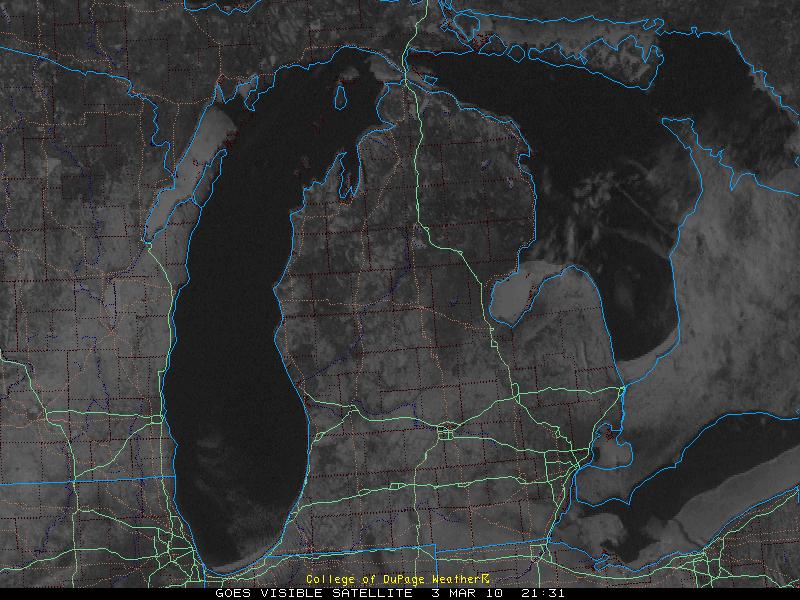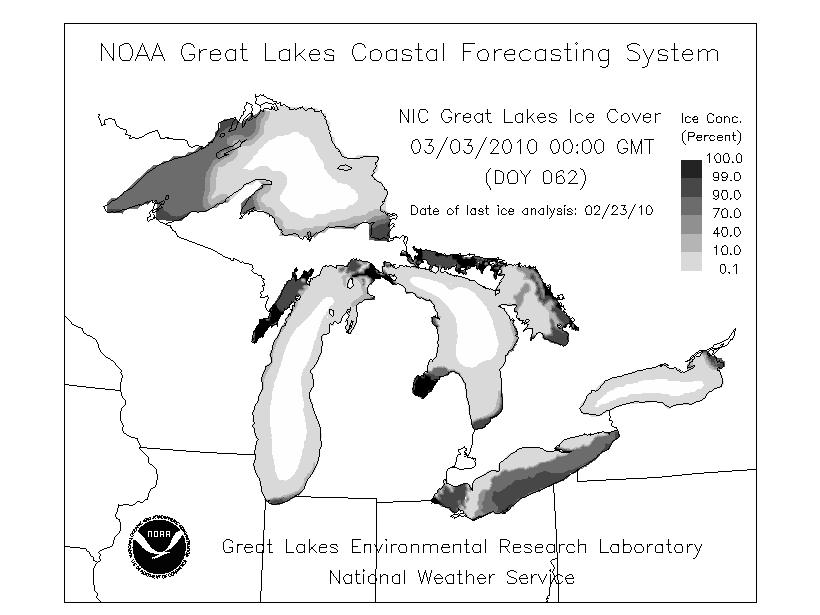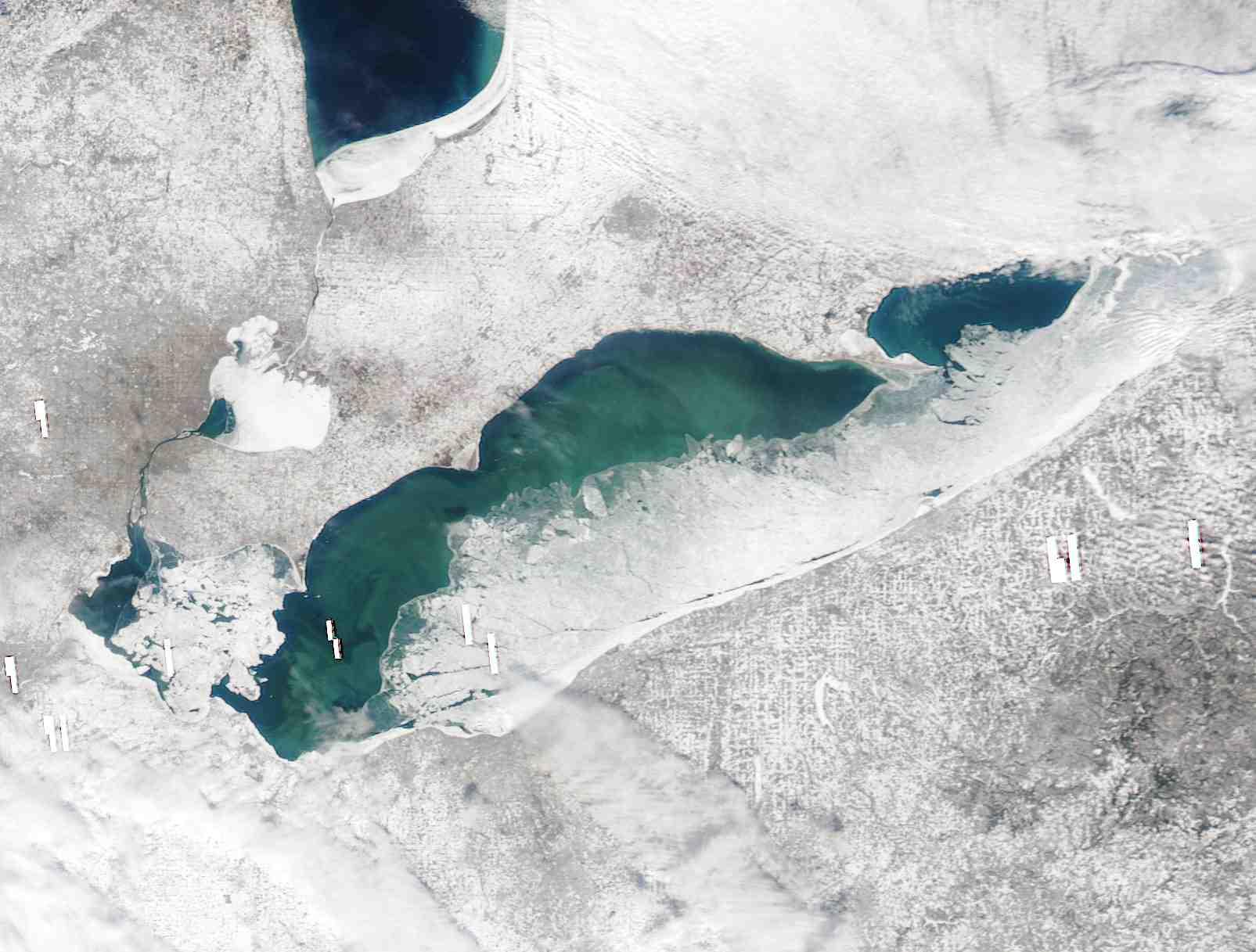03.08.10
Posted in Severe Weather Nowcast at 1:27 pm by Rebekah
About to head out to western OK to go chasing…or more like an equipment testing session with thunderstorms. 😉 There’s already a couple of squall lines, the stronger one being along the dryline. Hoping for some lightning and perhaps small hail. More later…
Permalink
03.06.10
Posted in Severe Weather Forecast at 1:00 pm by Rebekah
Spring thunderstorms are coming back to the Plains! The first real chase setup looks like it will be on Monday (at least for the Southern Plains; yesterday there was a marginal chase setup in Nebraska/northern Kansas) . It doesn’t look great, but early season storm setups rarely do.
Models are finally showing some consensus on this one; a strong upper-level low/trough is forecast over west Texas by 00Z on the 9th (i.e., 6pm on Monday). Models show a surface low underneath the upper-level low, centered over southeast Colorado/southwest Kansas/west Oklahoma Panhandle/north Texas Panhandle. Surface winds around the cyclone will draw warm, semi-moist air from the Gulf of Mexico up into west Oklahoma. The 60F isotherm is forecast to be in either through southwest or central Oklahoma. It appears that there will be a dryline just ahead of the cold front in the east Texas Panhandle. Surface dewpoints may be in the 50s in southwest and possibly south central Oklahoma, with the 60F isodrosotherm in central Texas. Low CAPE values (a measure of instability–desired for much rising motion) of about 500 to 1000 J/kg may be realized in west Oklahoma and north central Texas. Helicity values (a measure of wind shear) are forecast to be more than decent for rotating storms; between 200 and 350 from 0-1 km in central Oklahoma/north central Texas (as well as a small portion of southwest Oklahoma), and 300 to 650 from 0-3 km in the same region.
Remember how I said the other day there are four primary conditions that severe storm forecasters look for? Monday’s setup has plenty of lift and shear, but moisture and instability are the greatest limiting factors. I am concerned that there may be too much cloud cover over Oklahoma and north Texas for enough heating to occur. I am also concerned that there may not be enough low-level moisture for good storms with low bases. At present, it looks as if there will be so much forcing that storms will break out, but they will quickly form a squall line.
However, I do think there may be some isolated storms perhaps behind the major line, along the dryline, or tail-end charlies (storms at the bottom of a line) that might have a chance of producing something interesting. Even within the line there may be some marginally severe hail.
I am keeping a close eye on this setup and am starting to consider taking a little drive southward on Monday…not so much for the sake of a good chase, but to test out my new equipment and see how coordinated I can be with my new setup on a marginal day. I figure it’s better to test new equipment on a marginal/bad day than on an excellent day and then have everything go wrong. 🙂 For now, I like the area between Wichita Falls, Gainesville, and Graham, Texas, as well as central Texas (though I wouldn’t want to go that far south unless it looked spectacular)…but that could change with the next few model runs…
Permalink
03.04.10
Posted in Weather News at 3:05 pm by Rebekah
As an update to my post a couple days ago, in which I said no tornadoes were reported in the US in February for the first time since records began around 1950, I stand corrected. A late tornado report made it in to the San Joaquin Valley/Hanford NWS office.
This EF0 tornado was reported by a trained storm spotter near Taft (near Bakersfield) in southern California on February 27th. It reportedly lasted 3 minutes and did not cause any damage.
However, this was still a remarkable month, as only two or three times has February seen only one or two tornadoes since 1950 or so!
Permalink
03.03.10
Posted in Weather News at 4:00 pm by Rebekah
While browsing some visible satellite images this afternoon, I came across a cool- but strange-looking image of Lake Michigan. Green Bay (the bay, not the city) appeared to be socked in with clouds, but the “clouds” weren’t moving on a satellite loop. If I saw this over land, I might think it were snow or fog.
A visible satellite image is just what it sounds like. A satellite records visible light reflected off the earth by the sun, so what you see on the satellite image is what you would see from space. White areas indicate a lot of reflected light (e.g., thick clouds or snow) while gray areas indicate less light (e.g., thin clouds). Snow is often visible on these satellite images.
When I looked at a nearby satellite image, I saw what appeared to be ice over part of Lake Erie. Lake Erie recently froze over, but now the ice is starting to break up and melt. After looking at a map showing current ice cover over the Great Lakes, I confirmed that the ice was indeed showing up on the visible satellite images. There might even be some snow on top of the ice.

Visible satellite image over Michigan, courtesy of the College of DuPage. To view more satellite images such as this (as well as loops), go to http://weather.cod.edu/analysis/analysis.1kmvis.html

Great Lakes ice cover, courtesy of the NOAA Great Lakes Coastal Forecasting System. To view this and other maps of the Great Lakes, see http://www.glerl.noaa.gov/res/glcfs/

MODIS satellite image of Lake Erie, showing ice cover on February 20, courtesy of the NWS in Buffalo. For more MODIS images of Lake Erie, go to http://www.erh.noaa.gov/buf/lakeffect/ice0910/index.htm
Permalink
03.02.10
Posted in Weather News at 4:13 pm by Rebekah
For the first time in 60 years, no tornadoes were reported in the United States in the month of February.
I’m not certain how many tornadoes the US sees on average each February; I tried to find this statistic in some weather archives, but was unsuccessful. A BBC article claims there are, on average, 22 tornadoes in the US in February; however, considering the same article says that tornadoes form when cold air collides with warm air, I would not completely trust this source.
One of the most perpetuated myths about Tornado Alley states that tornadoes form because of collisions between airmasses. Few myths grate on my nerves more than this one.
An airmass is a large body of air whose properties (e.g., temperature and humidity) are fairly uniform. These airmasses may be thousands of kilometers across and up to several kilometers high. The boundaries between these airmasses are what we call fronts, and that’s where a lot of our interesting weather takes place. If a cold airmass dives south from Canada into the US, the leading edge of the airmass is a cold front. If a warm, moist airmass moves north from the Gulf of Mexico into the US (i.e., cold air retreats northward ahead of the warm airmass), the leading edge of the airmass is a warm front.
If tornadoes occurred whenever airmasses collide, the entire world would be in a lot of trouble–as airmasses collide globally all the time, no matter what season it is. Furthermore, with all of the cold fronts that we’ve had over the past few months, February should have been full of tornadoes in the US.
The primary conditions for strong thunderstorm (and possibly tornado) formation are lift, instability, low-level moisture, and wind shear.
Thunderstorms require rising air, and lift gets the air to start rising. Lift may come in the form of a front, a dryline (similar to a front, it is the leading edge of a dry airmass, preceded by a moist airmass), a surface low pressure system, solar heating, an upper-level trough of low pressure, etc.
Once the air starts to rise, an unstable atmosphere will ensure that the air keeps rising. Air cools as it rises, but as long as it doesn’t cool as fast as the surrounding environment (i.e., the rising air is warmer than the environmental temperature), we have an unstable atmosphere. The best setup is one in which the environmental temperature is warm at the surface and rapidly decreases with height.
If the rising air is dry, we probably won’t get any clouds–so we want to have a warm, moist environment near the surface. The higher the moisture content, the more likely it is that we will have low-based clouds (good for tornadoes).
Finally, in order to get long-lived, rotating thunderstorms, called supercells, we also need to have the wind increasing and changing direction with height. This is called wind shear.
During the month of February, we had plenty of lift and shear, but not enough instability or moisture for many severe thunderstorms. We continue to be in an active weather pattern in terms of upper-level troughs and a strong southern jet stream, but the Southern Plains needs to heat up and moisture needs to return before we can have any hope of the storm chasing season beginning.
When will this happen? According to long-range weather and climate index models, it looks like it may be at least another couple weeks.
Permalink
« Previous Page « Previous Page Next entries »


